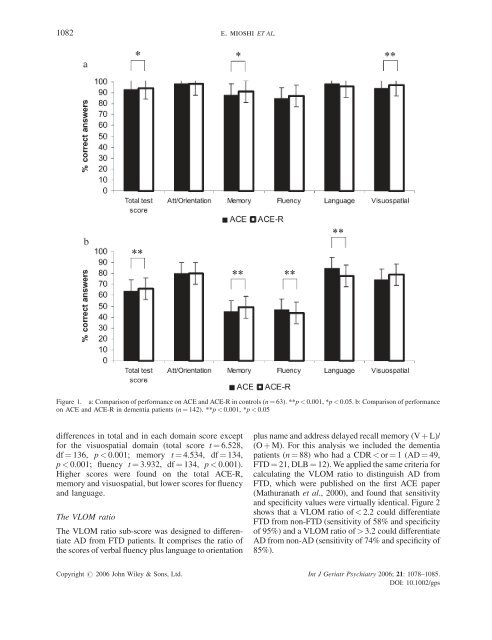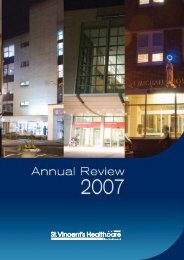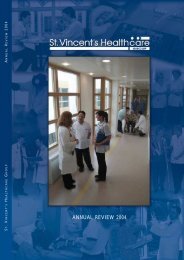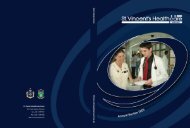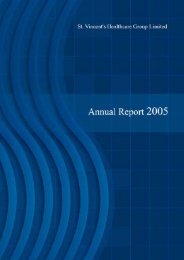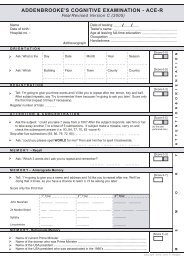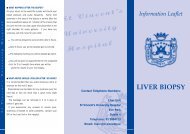The Addenbrooke's Cognitive Examination Revised (ACE-R): a brief ...
The Addenbrooke's Cognitive Examination Revised (ACE-R): a brief ...
The Addenbrooke's Cognitive Examination Revised (ACE-R): a brief ...
Create successful ePaper yourself
Turn your PDF publications into a flip-book with our unique Google optimized e-Paper software.
1082 e. mioshi ET AL.<br />
Figure 1. a: Comparison of performance on <strong>ACE</strong> and <strong>ACE</strong>-R in controls (n ¼ 63). **p < 0.001, *p < 0.05. b: Comparison of performance<br />
on <strong>ACE</strong> and <strong>ACE</strong>-R in dementia patients (n ¼ 142). **p < 0.001, *p < 0.05<br />
differences in total and in each domain score except<br />
for the visuospatial domain (total score t ¼ 6.528,<br />
df ¼ 136, p < 0.001; memory t ¼ 4.534, df ¼ 134,<br />
p < 0.001; fluency t ¼ 3.932, df ¼ 134, p < 0.001).<br />
Higher scores were found on the total <strong>ACE</strong>-R,<br />
memory and visuospatial, but lower scores for fluency<br />
and language.<br />
<strong>The</strong> VLOM ratio<br />
<strong>The</strong> VLOM ratio sub-score was designed to differentiate<br />
AD from FTD patients. It comprises the ratio of<br />
the scores of verbal fluency plus language to orientation<br />
plus name and address delayed recall memory (V þ L)/<br />
(O þ M). For this analysis we included the dementia<br />
patients (n ¼ 88) who had a CDR < or ¼ 1(AD¼ 49,<br />
FTD ¼ 21, DLB ¼ 12). We applied the same criteria for<br />
calculating the VLOM ratio to distinguish AD from<br />
FTD, which were published on the first <strong>ACE</strong> paper<br />
(Mathuranath et al., 2000), and found that sensitivity<br />
and specificity values were virtually identical. Figure 2<br />
shows that a VLOM ratio of < 2.2 could differentiate<br />
FTD from non-FTD (sensitivity of 58% and specificity<br />
of 95%) and a VLOM ratio of > 3.2 could differentiate<br />
AD from non-AD (sensitivity of 74% and specificity of<br />
85%).<br />
Copyright # 2006 John Wiley & Sons, Ltd. Int J Geriatr Psychiatry 2006; 21: 1078–1085.<br />
DOI: 10.1002/gps


